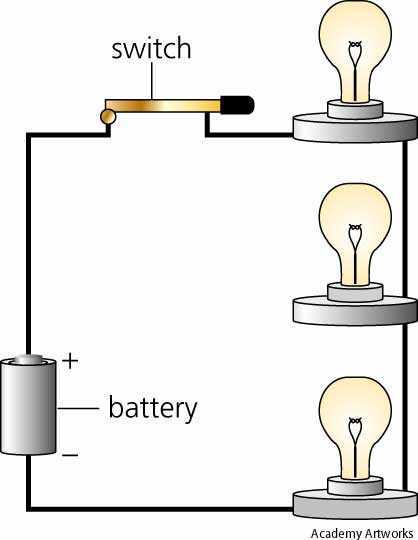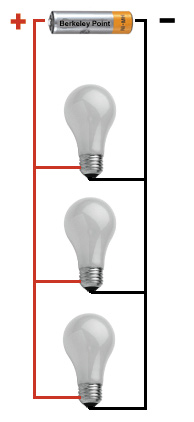So this time, we the 9th
grade, have to explain what we learned 'till now. Well... basically it is about
magnetism and electricity. :D
We had a sheet with
learning goals ( a yellow one, to not be lost by us), and we had to expain the
first 8 ones. Theeere we goooo!!
Goal 1
I can explain how electric
charges interact
There are two types of
charges: negative and positive. If we put two magnets carged positive, they’ll
repel themselves, just like when a pair of negatively charged magnets do when
put near each other. But if we put a positive and a negative magnet together, they'll attract each other.
So:
- Positive + positive = repel
- Negative + negative = repel
- Positive + negative = attract
 |
| Interaction between different types of magnets |
Goal 2
I can give examples of how charges can be trasferred between materials and explain them.
- Charging by friction is the transfer of electrons from one uncharged object to another by rubbing. The object that loses electrons becomes positive, and the object that gains electrons becomes negative.

For example:
When you rub the carpet with
hairy socks, the electrons moves to your socks, and the protons go to the
carpet. So you charged the socks negative and a part of the carpet positive.
- Charging by conduction is the transfer of electrons from a charged object to another by direct contact. Derp's foot, that was uncharged, now has a negative charge, because the sock passed the electrons to the foot just by touching it.
- Charging by induction is the movement of electrons in a single object caused by the eletric field of the second object. This may be difficult to understand. You’re not actually charging the object. You’re just making the charges of the objects move through itself. For example, Derp's hand is negativelly charged because of the rubbing on the carpet that passed the electrons, which spread through the whole body. Let's suppose Derp needs to go somewhere and is going to twist the doorknob. In that moment, the negative charges of the hands attracts the positive charges that were randomly moving inside the doorknob. That's charging by induction. :)
Goal 3
I can explain how an electric current is produced
First, an electric current is the continuous flow of electric charges through a material. In other words, it is just electrons passing through a material.
To create an electric current, we need to have something that will give us electrons, a something to be used as a "street" to have the electrons passing through it, and something that will make the electrons move. A voltage source (for example a battery), a wire, and a resistor (for example a little light bulb). If we connect all of them together, we'll create an electric current.
Goal 4
I can compare conductors with insulators
 Conductors transfers electric charge well. Their atoms contain electrons that are bound loosely that are able to move throughout the material. Some examples of conductors are metal and copper.
Conductors transfers electric charge well. Their atoms contain electrons that are bound loosely that are able to move throughout the material. Some examples of conductors are metal and copper.
Insulators do not transfer charge well. Their atoms, unlike the conductors, contain electrons that are bound tightly together. Some examples of insulators are rubber, plastic, and wood.
Curiosity
Are we good conductors? Why?
Compared to other insulators, yes. Because even though we have skin, which is an excellent insulator, and a lot of non-ionic substances, such as lipids, water, carbohydrates, and proteins, there are a lot of ionic substances, like iron and sodium. The average resistance of a human is approximately 6 meg Ohms (the measurement of resistance), while copper is only a few Ohms (depending on the length). But when compared to ionic substances, we are not a really good conductor.
Goal 5
I can explain how resistance affects current.
Resistance is me measurement of how difficult it is for charges to flow through a material. The greater resistance, the less current is flowing.
So how do we determine resistance? There are four categories.
I can explain how an electric current is produced
First, an electric current is the continuous flow of electric charges through a material. In other words, it is just electrons passing through a material.
To create an electric current, we need to have something that will give us electrons, a something to be used as a "street" to have the electrons passing through it, and something that will make the electrons move. A voltage source (for example a battery), a wire, and a resistor (for example a little light bulb). If we connect all of them together, we'll create an electric current.
Goal 4
I can compare conductors with insulators
 Conductors transfers electric charge well. Their atoms contain electrons that are bound loosely that are able to move throughout the material. Some examples of conductors are metal and copper.
Conductors transfers electric charge well. Their atoms contain electrons that are bound loosely that are able to move throughout the material. Some examples of conductors are metal and copper.Insulators do not transfer charge well. Their atoms, unlike the conductors, contain electrons that are bound tightly together. Some examples of insulators are rubber, plastic, and wood.
Curiosity
Are we good conductors? Why?
Compared to other insulators, yes. Because even though we have skin, which is an excellent insulator, and a lot of non-ionic substances, such as lipids, water, carbohydrates, and proteins, there are a lot of ionic substances, like iron and sodium. The average resistance of a human is approximately 6 meg Ohms (the measurement of resistance), while copper is only a few Ohms (depending on the length). But when compared to ionic substances, we are not a really good conductor.
Goal 5
I can explain how resistance affects current.
Resistance is me measurement of how difficult it is for charges to flow through a material. The greater resistance, the less current is flowing.
So how do we determine resistance? There are four categories.
- Material - the resistance highly depends on this one. Of what the wire is made is very important. For example, a copper wire has much less resistance than a plastic one.
- Length - long wires have more resistance than short wires, which means that long wires don't have current as much as a short wire. If electricity was water and the wire was a pipe, a short one would transport more water than the long one at the same time
- Diameter - wires with big diameter has less resistance than small diameter ones.
- Temperature - for most of the conductors, the greater temperature, there is less current flowing through them.

Goal 6
I can use Ohm's law to calculate resistance, current or voltage.
Georg Ohm was a scientist that lived in the 1800s. He discovered that even if he changed the voltage and the current, resistance was not changed. He also did the discovery the law named after his surname, the Ohm's Law. Ohm's Law stated that the resistance is equal to the voltage divided by the current.
 |
| Ohms, the unit of measurement of resistance |
Goal 7
I can build series and parallel circuits and describe its parts
First, we have to know what are circuits.
- Circuits have devices that are run by electrical energy.
- A circuit has a source of electrical energy.
- Electric circuits are connected by conducting wires.
 |
| This is how a simple circuit looks like |
- Wire - connects other components
- Energy source - gives electricity to keep the circuit working
- Resistor - the energy output
- Switch (optional) - control the work of the circuit

Series Circuits
There is only one path for the current to take. Or the current goes clock wise or counter-clockwise, there is no other way. Also, if one of the light bulbs goes out, others can't work, even though nothing is wrong with them, because the current can't take a different way to be flowing. Another disadvantage is that the the light of the bulbs goes dim if more light bulbs are added. This happens because the more light bulbs are added, the more resistance will increase, consequently decreasing the current in a series circuits.
Parallel Circuits
 They have several paths for the current to take. There are a lot of different ways that electricity than flow. If one of the light bulbs burns, unlikely from the series circuit, the others will continue on working, because the electricity finds new ways to go to the other bulbs. Another contrary trait of the parallel circuit from the series one, is that even though more light bulbs are added, the light will stay the same, not going dimmer. To understand this better, think of you drinking orange juice in a straw. If there is only one straw, you'll be okay with that, but since you (hypothetically) loooove orange juice, you put one more straw in the cup and you'll be drinking twice as much as orange juice you were drinking before. Something similar happens with the parallel circuit, but not with orange juices, and with electric charges. So the more bulbs are added, the more resistance will decrease, elevating the current flowing in the circuit.
They have several paths for the current to take. There are a lot of different ways that electricity than flow. If one of the light bulbs burns, unlikely from the series circuit, the others will continue on working, because the electricity finds new ways to go to the other bulbs. Another contrary trait of the parallel circuit from the series one, is that even though more light bulbs are added, the light will stay the same, not going dimmer. To understand this better, think of you drinking orange juice in a straw. If there is only one straw, you'll be okay with that, but since you (hypothetically) loooove orange juice, you put one more straw in the cup and you'll be drinking twice as much as orange juice you were drinking before. Something similar happens with the parallel circuit, but not with orange juices, and with electric charges. So the more bulbs are added, the more resistance will decrease, elevating the current flowing in the circuit.
Goal 8
I can explain the relationship between power, voltage and current
Power is the rate at which energy is transformed from one form to another. For example, a hair dryer has 1200 watts, and a computer has 150.
So how do you calculate it? Simple.
POWER = VOLTAGE X CURRENT
Voltage is the force that pushed the current forward. So by knowing the voltage and the current, you can calculate how much power has an electric appliance you've got.Bibliography
Me Gusta face - http://www.google.com.br/imgres?q=foot&um=1&hl=ko&sa=N&biw=1280&bih=663&tbm=isch&tbnid=7_tOEkEwIOfBPM:&imgrefurl=http://erwinadr.blogspot.com/2011/09/foot-problems.html&docid=RDn394phcVNJ_M&imgurl=https://blogger.googleusercontent.com/img/b/R29vZ2xl/AVvXsEh66B10VtiyDn_InjdZgI5kH3sBiOZhfwZMODUZwzCGq1gwR5gk-Pv-w3bG1aHzZmB70rkoqhI_VP9WnDzCclto-8rpYLtqBUZrSmjqELrDzaRTmSRnKyYrI_F7VdmL4xHWscroZgyZD7U/s1600/phototake_rm_photo_of_flat_foot.jpg&w=493&h=335&ei=Pcg-T5-tGab00gH4osy8Bw&zoom=1&iact=hc&vpx=344&vpy=314&dur=213&hovh=185&hovw=272&tx=180&ty=61&sig=115941791216781142149&page=1&tbnh=144&tbnw=192&start=0&ndsp=18&ved=0CF0QrQMwBw
Photo of foot - http://www.google.com.br/imgres?q=foot&um=1&hl=ko&sa=N&biw=1280&bih=663&tbm=isch&tbnid=7_tOEkEwIOfBPM:&imgrefurl=http://erwinadr.blogspot.com/2011/09/foot-problems.html&docid=RDn394phcVNJ_M&imgurl=https://blogger.googleusercontent.com/img/b/R29vZ2xl/AVvXsEh66B10VtiyDn_InjdZgI5kH3sBiOZhfwZMODUZwzCGq1gwR5gk-Pv-w3bG1aHzZmB70rkoqhI_VP9WnDzCclto-8rpYLtqBUZrSmjqELrDzaRTmSRnKyYrI_F7VdmL4xHWscroZgyZD7U/s1600/phototake_rm_photo_of_flat_foot.jpg&w=493&h=335&ei=Pcg-T5-tGab00gH4osy8Bw&zoom=1&iact=hc&vpx=344&vpy=314&dur=213&hovh=185&hovw=272&tx=180&ty=61&sig=115941791216781142149&page=1&tbnh=144&tbnw=192&start=0&ndsp=18&ved=0CF0QrQMwBw
Photo of a hand - http://www.google.com.br/imgres?q=hand&um=1&hl=ko&sa=N&biw=1280&bih=699&tbm=isch&tbnid=EKEEDSBGbC1ZxM:&imgrefurl=http://www.ucl.ac.uk/news/news-articles/1006/10061602&docid=AmdcRrhmTuepoM&imgurl=http://www.ucl.ac.uk/news/news-articles/1006/hand_pic.JPG&w=521&h=593&ei=-9M-T7yuEOHe0QHg0933Aw&zoom=1&iact=hc&vpx=802&vpy=313&dur=2381&hovh=240&hovw=210&tx=111&ty=173&sig=115941791216781142149&page=1&tbnh=146&tbnw=128&start=0&ndsp=21&ved=0CIwBEK0DMBI
Wire - http://www.google.com.br/imgres?q=wire&um=1&hl=ko&sa=N&biw=1280&bih=699&tbm=isch&tbnid=VEKhYga_YheQiM:&imgrefurl=http://www.wiringproducts.com/contents/en-us/d198.html&docid=9Y6ea8oDIvqCHM&imgurl=http://www.wiringproducts.com/contents/media/thhn_wire_1.jpg&w=339&h=377&ei=2N0-T7OEN4L40gHXvv3GBw&zoom=1&iact=hc&vpx=403&vpy=302&dur=4393&hovh=237&hovw=213&tx=140&ty=177&sig=115941791216781142149&page=1&tbnh=168&tbnw=161&start=0&ndsp=18&ved=0CF0QrQMwBw
Battery - http://www.google.com.br/imgres?q=battery&um=1&hl=ko&sa=N&biw=1280&bih=663&tbm=isch&tbnid=SDkMWjsTdLUKxM:&imgrefurl=http://androidspin.com/2011/07/25/app-betterbatterystats-helps-you-gain-bettery-battery-life/&docid=elLSG7gRBm4XNM&imgurl=http://androidspin.com/wp-content/uploads/2011/07/battery.jpg&w=400&h=300&ei=Qt4-T8rYDMOv0AHl6syvCA&zoom=1&iact=hc&vpx=183&vpy=155&dur=6269&hovh=194&hovw=259&tx=201&ty=112&sig=115941791216781142149&page=1&tbnh=145&tbnw=184&start=0&ndsp=18&ved=0CEAQrQMwAA
Lightbulb - http://www.google.com.br/imgres?q=little+light+bulb&um=1&hl=ko&sa=N&biw=1280&bih=699&tbm=isch&tbnid=UpmdjWa84XRJ3M:&imgrefurl=http://walyou.com/flat-light-bulb-design/&docid=j_tIC5XppzD0KM&imgurl=http://www.walyou.com/img/flat-light-bulb-design-1.jpg&w=420&h=432&ei=yd4-T6zxDeLs0gHp4OTVBw&zoom=1&iact=hc&vpx=387&vpy=325&dur=1059&hovh=228&hovw=221&tx=138&ty=175&sig=115941791216781142149&page=2&tbnh=154&tbnw=143&start=18&ndsp=23&ved=0CKYBEK0DMBM
Copper photo - http://www.google.com.br/imgres?q=copper&um=1&hl=ko&sa=N&biw=1280&bih=699&tbm=isch&tbnid=nHHY1bhfskdPvM:&imgrefurl=http://mercuryreliance.wordpress.com/2011/01/19/copper-stockpiles-sign-of-coming-depression/&docid=bufuHdCA072CxM&imgurl=http://mercuryreliance.files.wordpress.com/2011/01/copper_1.jpg&w=500&h=437&ei=luE-T_aoD4eM0QHfqIDoBw&zoom=1&iact=hc&vpx=364&vpy=149&dur=10972&hovh=210&hovw=240&tx=129&ty=125&sig=115941791216781142149&page=1&tbnh=150&tbnw=172&start=0&ndsp=17&ved=0CEQQrQMwAQ
Series circuits - http://images.yourdictionary.com/series-circuit
Parallel circuit - http://www.google.com.br/imgres?q=parallel+circuit&um=1&hl=ko&sa=N&biw=1280&bih=699&tbm=isch&tbnid=jHvaX54Oj0hGYM:&imgrefurl=http://www.berkeleypoint.com/learning/parallel_circuit.html&docid=FAvb7yusysAviM&imgurl=http://www.berkeleypoint.com/images/parallel.jpg&w=194&h=422&ei=MP0-T4e5Jo2y0AH5h5TFBw&zoom=1&iact=hc&vpx=177&vpy=143&dur=459&hovh=331&hovw=152&tx=79&ty=150&sig=115941791216781142149&page=2&tbnh=159&tbnw=73&start=15&ndsp=20&ved=0CJMBEK0DMA8






